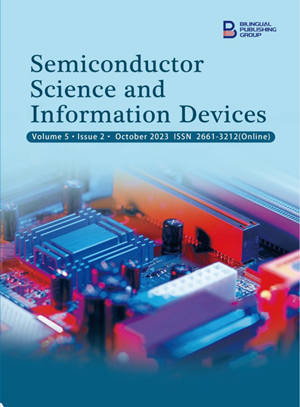Review on Activated Carbon for Supercapacitors
DOI:
https://doi.org/10.30564/ssid.v5i2.6171Abstract
Carbon is a lavish element that has a large number of composite elements. Activated carbon is the main source for storing the charge in the Supercapacitor. The management of waste is a big issue in Kathmandu Valley, and by converting the waste into activated carbon the waste management is somehow solved. The wet blue leather waste is found to be more reliable for making supercapacitors than the other waste material. The lowest value of capacitance is found in the eggshell material.
Keywords:
Carbon; Capacitance; Composite element; Supercapacitor; WasteReferences
[1] Demming, A., 2010. King of the elements?. Nanotechnology. 21(30), 300201. DOI: https://doi.org/10.1088/0957-4484/21/30/300201
[2] BET Theory [Internet]. Wikipedia. Available from: https://en.wikipedia.org/w/index.php?title=BET_theory&oldid=1091611936
[3] Chada, N., Romanos, J., Hilton, R., et al. (editors), 2012. Activated carbon monoliths for methane storage. APS March Meeting 2012; 2012 Feb 27–Mar 2; Boston, Massachusetts. College Park: American Physical Society.
[4] Shrestha, D., 2022. Activated carbon and its hybrid composites with manganese (IV) oxideas effectual electrode materials for high performance supercapacitor. Arabian Journal of Chemistry. 15(7), 103946. DOI: https://doi.org/10.1016/j.arabjc.2022.103946
[5] Zhi, M., Yang, F., Meng, F., et al., 2014. Effects of pore structure on performance of an activated-carbon supercapacitor electrode recycled from scrap waste tires. ACS Sustainable Chemistry & Engineering. 2(7), 1592–1598. DOI: https://doi.org/10.1021/sc500336h
[6] Miao, L., Song, Z., Zhu, D., et al., 2020. Recent advances in carbon-based supercapacitors. Materials Advances. 1(5), 945–966. DOI: https://doi.org/10.1039/D0MA00384K
[7] Dangi, M.B., Pretz, C.R., Urynowicz, M.A., et al., 2011. Municipal solid waste generation in Kathmandu, Nepal. Journal of Environmental Management. 92(1), 240–249. DOI: https://doi.org/10.1016/j.jenvman.2010.09.005
[8] Xie, W.H., Li, H., Yang, M., et al., 2022. CO2 capture and utilization with solid waste. Green Chemical Engineering. 3(3), 199–209. DOI: https://doi.org/10.1016/j.gce.2022.01.002
[9] Nepal’s Fuel Crisis: Imposing Renewable Energy Surcharge on Imported Fuels [Internet]. Energypedia. Available from: https://energypedia.info/wiki/Nepal%27s_Fuel_Crisis:_Imposing_Renewable_Energy_Surcharge_on_Imported_Fuels
[10] Rubin, E.S., Mantripragada, H., Marks, A., et al., 2012. The outlook for improved carbon capture technology. Progress in Energy and Combustion Science. 38(5), 630–671. DOI: https://doi.org/10.1016/j.pecs.2012.03.003
[11] Barbarossa, V., Vanga, G., Viscardi, R., et al., 2014. CO2 as carbon source for fuel synthesis. Energy Procedia. 45, 1325–1329. DOI: https://doi.org/10.1016/j.egypro.2014.01.138
[12] Kalpana, D., Cho, S.H., Lee, S.B., et al., 2009. Recycled waste paper—A new source of rawmaterial for electric double-layer capacitors. Journal of Power Sources. 190(2), 587–591. DOI: https://doi.org/10.1016/j.jpowsour.2009.01.058
[13] Ismanto, A.E., Wang, S., Soetaredjo, F.E., et al., 2010. Preparation of capacitor’s electrode from cassava peel waste. Bioresource Technology. 101(10), 3534–3540. DOI: https://doi.org/10.1016/j.biortech.2009.12.123
[14] Raymundo-Piñero, E., Cadek, M., Wachtler, M., et al., 2011. Carbon nanotubes as nanotex turing agents for high power supercapacitors based on seaweed carbons. ChemSusChem. 4(7), 943–949. DOI: https://doi.org/10.1002/cssc.201000376
[15] Dobele, G., Dizhbite, T., Gil, M.V., et al., 2012. Production of nanoporous carbons from wood processing wastes and their use in supercapacitors and CO2 capture. Biomass and Bioenergy. 46, 145–154. DOI: https://doi.org/10.1016/j.biombioe.2012.09.010
[16] Chen, M., Kang, X., Wumaier, T., et al., 2013. Preparation of activated carbon from cotton stalk and its application in supercapacitor.Journal of Solid State Electrochemistry. 17, 1005–1012. DOI: https://doi.org/10.1007/s10008-012-1946-6
[17] Zhi, M., Yang, F., Meng, F., et al., 2014. Effects of pore structure on performance of an activated-carbon supercapacitor electrode recycled from scrap waste tires. ACS Sustainable Chemistry & Engineering. 2(7), 1592–1598. DOI: https://doi.org/10.1021/sc500336h
[18] Konikkara, N., Kennedy, L.J., Vijaya, J.J., 2016. Preparation and characterization of hierarchical porous carbons derived from solid leather waste for supercapacitor applications. Journal of Hazardous Materials. 318, 173–185. DOI: https://doi.org/10.1016/j.jhazmat.2016.06.037
[19] Konikkara, N., Kennedy, L.J., 2017. Electrochemical properties of solid leather wastes based supercapacitor electrodes using H2SO4 electrolyte. Materials Letters. 205, 56–61. DOI: https://doi.org/10.1016/j.matlet.2017.06.048
[20] Kennedy, L.J., Ratnaji, T., Konikkara, N., et al., 2018. Value added porous carbon from leather wastes as potential supercapacitor electrode using neutral electrolyte. Journal of Cleaner Production. 197, 930–936. DOI: https://doi.org/10.1016/j.jclepro.2018.06.244
[21] Minakshi, M., Higley, S., Baur, C., et al., 2019. Calcined chicken eggshell electrode for battery and supercapacitor applications. RSC Advances. 9(46), 26981–26995.DOI: https://doi.org/10.1039/C9RA04289J
[22] Rajkumar, S., Elanthamilan, E., Balaji, T.E., et al., 2020. Recovery of copper oxide nanoparticles from waste SIM cards for supercapacitor electrode material. Journal of Alloys and Compounds. 849, 156582. DOI: https://doi.org/10.1016/j.jallcom.2020.156582
[23] Activated Carbon [Internet]. Wikipedia. Available from: https://en.wikipedia.org/w/index.php?title=Activated_carbon&oldid=1099514697
[24] Tarimo, D.J., Oyedotun, K.O., Sylla, N.F., et al., 2022. Waste chicken bone-derived porous carbon materials as high performance electrode for supercapacitor applications. Journal of Energy Storage. 51, 104378. DOI: https://doi.org/10.1016/j.est.2022.104378
[25] Scanning Electron Microscope [Internet]. Wikipedia. Available from: https://en.wikipedia.org/w/index.php?title=Scanning_electron_microscope&oldid=1100146463
[26] Khawaja, M.K., Alkhalidi, A., Mansour, S., 2019. Environmental impacts of energy storage waste and regional legislation to curtail their effects—highlighting the status in Jordan. Journal of Energy Storage. 26, 100919. DOI: https://doi.org/10.1016/j.est.2019.100919
[27] Gür, T.M., 2018. Review of electrical energy storage technologies, materials and systems: Challenges and prospects for large-scale grid storage. Energy & Environmental Science.11(10), 2696–2767. DOI: https://doi.org/10.1039/C8EE01419A
[28] Malav, L.C., Yadav, K.K., Gupta, N., et al., 2020. A review on municipal solid waste as a renewable source for waste-to-energy project in India: Current practices, challenges, and furture opportunities. Journal of Cleaner Production. 277, 123227. DOI:https://doi.org/10.1016/j.jclepro.2020.123227
Downloads
How to Cite
Issue
Article Type
License
Copyright © 2023 Rajesh Shrestha, Narendra Phulara

This is an open access article under the Creative Commons Attribution-NonCommercial 4.0 International (CC BY-NC 4.0) License.




 Aims and Scope
Aims and Scope Rajesh Shrestha
Rajesh Shrestha





